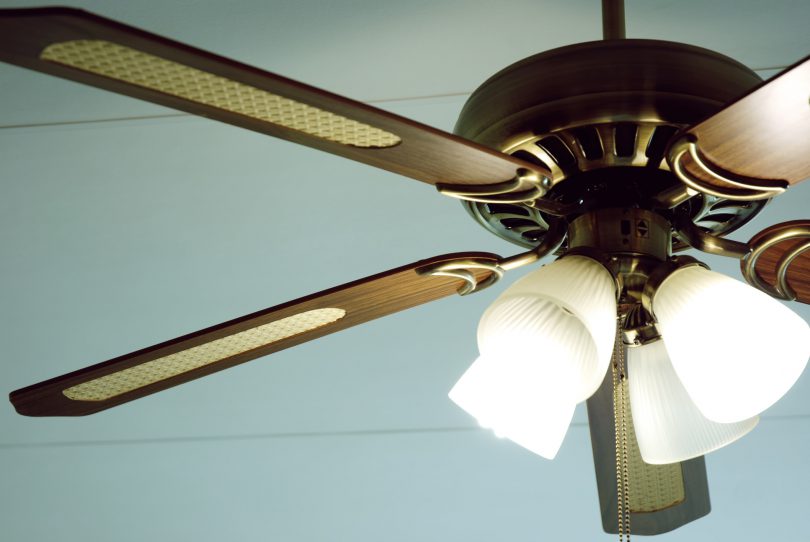By James Dulley
People typically think of ceiling fans only for summertime comfort and lower air-conditioning costs, but ceiling fans are unique in that they can also reduce your wintertime heating bills with proper use.
Before installing a ceiling fan, it is important to understand how one functions. A ceiling fan does not cool a room like an air conditioner. It actually heats the room whenever it is running. All of the electricity it uses ends up as heat. Always turn the fan off when no one is in a room.
You feel cooler under a ceiling fan because it creates a downward breeze over your skin. If you feel cooler, you can run your air conditioner less or set its thermostat a few degrees higher without sacrificing comfort. If you do not do this, running the ceiling fan will increase your electric bills.
During winter, reverse the rotation of the fan blades so the air flows up toward the ceiling. Run it on low speed. This gently moves the hotter air, which collects up near the ceiling, throughout the room without creating a chilly breeze. This allows you to set the heating thermostat a few degrees lower for savings.
The simplest way to select an efficient ceiling fan is to pick one that is Energy Star certified. To be certified, a ceiling fan must meet certain airflow rates per watt used at various speeds. This is similar to miles-per-gallon efficiency ratings for cars.
When selecting a typical lower-cost four- or five-blade fan, a rule-of-thumb for sizing is (room size vs. diameter of blades):
• up to 75 sq. ft. – 36 in.,
• 75 to 144 sq. ft. – 36 to 42 in.,
• 144 to 225 sq. ft. – 44 to 50 in.,
• 225 to 400 sq. ft. – 50 to 54 in.
The ideal height for the fan blades is about 8 feet above the floor. A three-inch downrod is included with most fans to provide the proper height. For high ceilings, downrods up to six feet long are used to get the fan low enough. For safety reasons, never have the blades closer than 7 feet from the floor.
Many new, stylish fans have one to six blades with three being the most common. Pay attention to the pitch angle of the blades to get an idea of how strong a breeze it creates. A steeper pitch moves more air at a slower speed. This often indicates a more powerful and quiet motor.
The newest and most efficient motors are DC (direct current) motors. These are similar in design concept to the variable speed motors in new heat pumps. Some offer up to six speeds and use only 33 watts of electricity.
Most people install a lighting kit under the ceiling fan. Select one with LED lighting. It is not only efficient, but it lasts for many years and most are dimmable.
A convenient option is a model with a hand-held remote, which allows you to adjust the speed and switch it off when leaving a room. Some new high-tech fans can be controlled by a cell phone with a special fan app.

